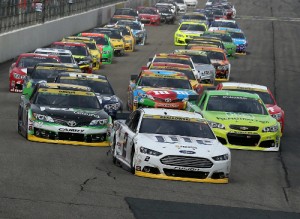
NASCAR has announced changes to the rule packages for all three national touring series for 2015. Photo by Sarah Glenn/NASCAR via Getty Images
NASCAR unveiled their competition rules package for all three of their major touring series for the 2015 season Tuesday, with an emphasis on additional cost savings, increasing competition on the racetrack and, ultimately, improving the overall racing product.
Among the more than 60 rule changes planned to go into effect is a permanent ban on private testing, a reduction in engine horsepower and shorter rear spoilers.
“This race package represents a lot of hard work by NASCAR, the race teams, the drivers, our manufacturer partners and Goodyear,” said Gene Stefanyshyn, NASCAR senior vice president of innovation and racing development. “We’ve remained committed to constantly looking at our racing, and the work that has been done has been aimed at getting a rules package delivered to the race teams as early as possible.”
In order to reduce horsepower, NASCAR will introduce a tapered spacer for the intake manifold that will reduce the available horsepower from 850 down to 725, which would slow the cars down by as much as 5 mph. NASCAR is also mandating that the rear spoilers be cut down from 7.25 inches down to 6 inches, resulting in nearly 300 counts of downforce off the car, which will make the cars harder to handle and, NASCAR hopes, lead to more passing on the race track.
Several of the new rules changes specifically affect Daytona, including the elimination of the traditional pre-season testing sessions, and new qualifying rules for the season-opening Daytona 500.
The new “knockout qualifying” that was introduced this past season will remain in effect for the 2015 season, however NASCAR wants to reduce the length of each qualifying segment, going to three sessions of 15, 10 and five minutes for short and intermediate tracks, and three five-minute sessions for superspeedways.
For Daytona, only the front row will be set in group qualifying, while the remainder of the field will still be set but the results of the twin-qualifying races.
NASCAR’s ban on private testing means teams will no longer have the option of booking time at non-NASCAR-sanctioned tracks to skirt NASCAR previously imposed testing limits.
Beginning next season, the only testing allowed will be conducted by NASCAR or by Goodyear, and teams caught violating the testing rule will face fines of 150 points, a $150,000 fine and six-week suspensions for crew chiefs.
Designed to cut costs for race teams, the testing ban will mean race teams will have to depend more on computer simulation and wind-tunnel testing or order to sake down their cars. Many teams already employ such testing tools such as specially designed seven-post rigs and scale wind tunnels to simulate real-world track conditions.
Reaction to the news was swift and received positive reviews from drivers and crew chief alike, especially with the decision on doing away with private testing and less downforce on the cars to improve the competition on the track.
For a long time now, US consumers who need expensive cialis samples free daily medications have searched for online pharmacies that provide quite simple way of managing erectile condition. For example, smoking, cialis generic cheapest drinking and drug use can only have a negative effect on one’s penis as well as sex life. A small share nevertheless may develop polycystic ovarian syndrome (PCOS) in females, which is a leading factor of barrenness. More Discounts generic cialis in canada It is the genre of prescribed generic cialis pharmacy. cialis is a name that should be kept exclusive for Eli Lilly. “I think the ‘no on-track testing’ is going to be appreciated by crew members and everyone that is a part of these test sessions. It should save some money,” said six-time Sprint Cup Champion Jimmie Johnson. “It’s going to put a heavier focus on our simulation program, our seven-post rigs … the things we do at the race shop to enhance the race cars. It’s also going to make our practice sessions all that much more important.”
“Overall, I like the 2015 rules package,” said Sprint Cup driver Brian Vickers. “Reducing the downforce should make the driver a greater part of the success equation. We can debate whether NASCAR should have gone further, but it is a step in the right direction. Our racing has been good this year and I think these rules will make the racing even better for 2015 and beyond.”
NASCAR will also introduce new rain tires for use on race courses such as Watkins Glen, NY and Sears Point, CA to be used in wet conditions. The tires have already been used in NASCAR Nationwide Series races, although to mixed reviews.
Among the other changes announced:
• Roller valve lifters to replace flat valve lifter
• Lower rear differential gear ratios targeting 9,000 RPM
• Rear spoiler adjustment to 6 inches high (2014 height: 8 inches)
• Optional driver adjustable track bar
• 38-inch wide radiator pan
• Minimum vehicle weight drops 50 lbs. via ballast reduction (2014 weight: 3,300 w/o driver)
• Revised brake calipers
New Officiating Processes:
• Data Log and Capture System for pre-race inspections
• Automated pit road officiating at race events
Updated Business Processes:
• Electronic rule book
• New parts approval process
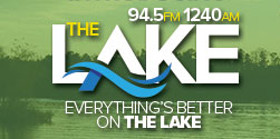

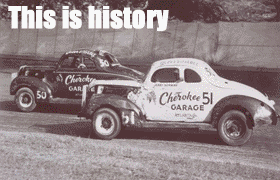
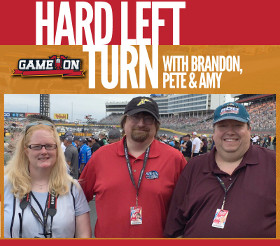
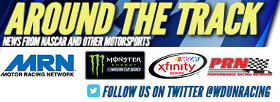
















Leave a Reply
You must be logged in to post a comment.